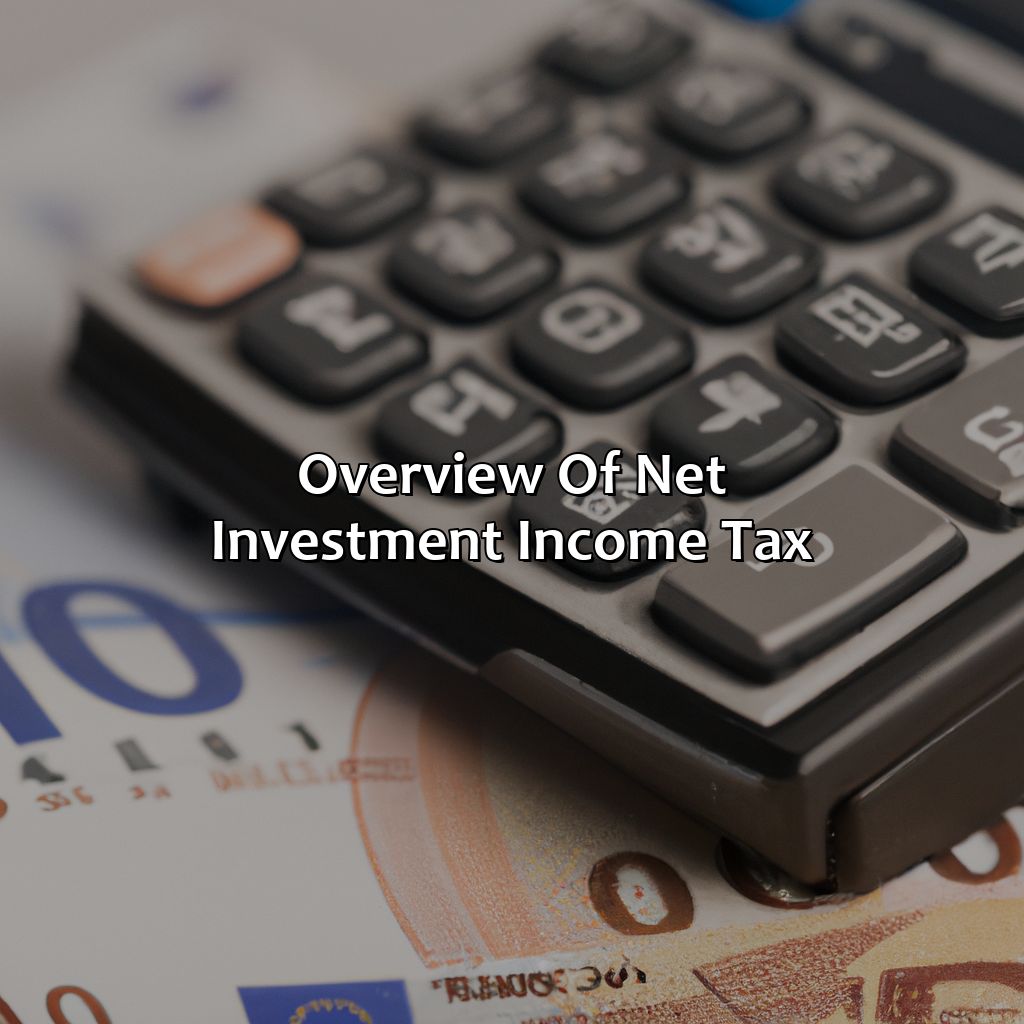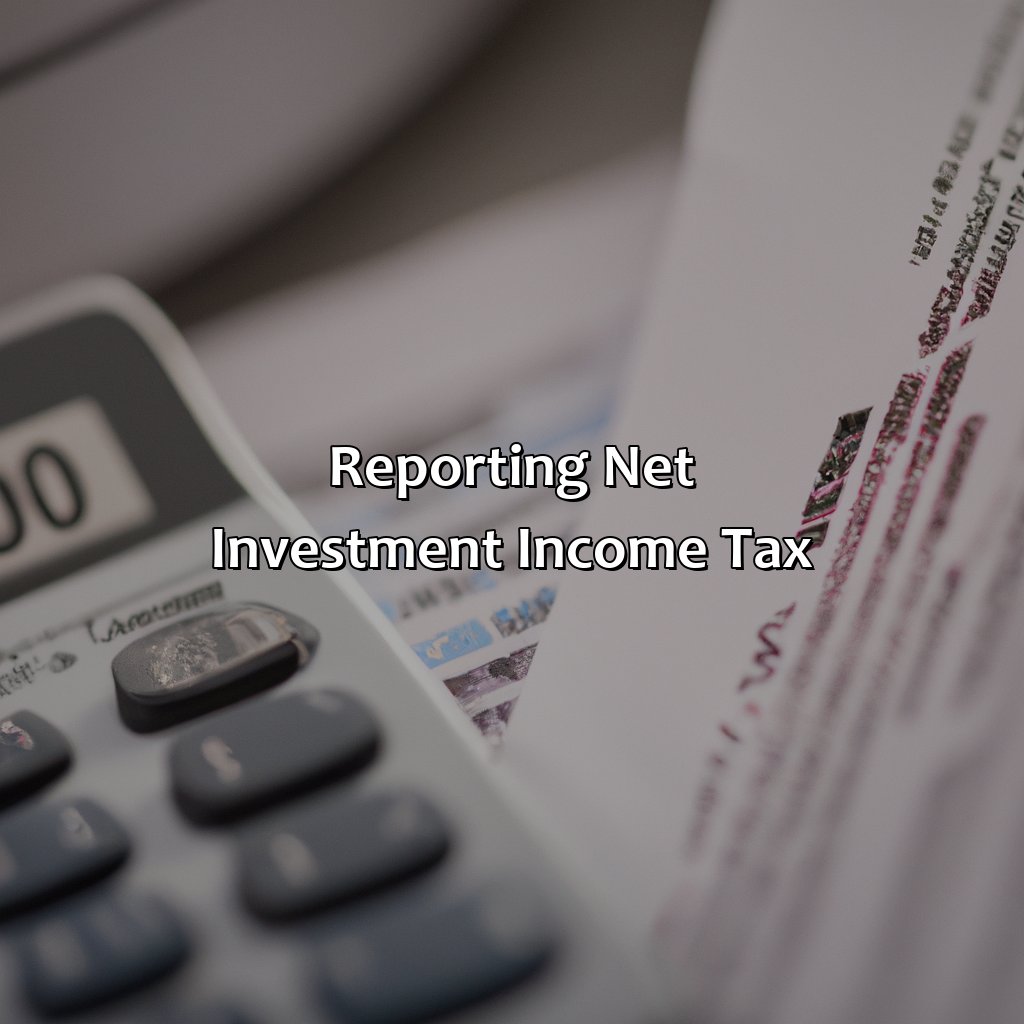What Is A Net Investment Income Tax?
Key Takeaways:
- The Net Investment Income Tax (NIIT) is a 3.8% tax on certain investment income that applies to individuals, estates, and trusts whose income exceeds certain thresholds. The tax is designed to help fund the Affordable Care Act (ACA).
- The calculation of the NIIT involves determining your net investment income and your modified adjusted gross income (MAGI). If your MAGI exceeds the threshold amount, which is $200,000 for individuals and $250,000 for joint filers, then the tax applies to the lesser of your net investment income or the excess of your MAGI over the threshold.
- In addition to the NIIT, some taxpayers may also be subject to the Additional Medicare Tax, which is a 0.9% tax on earned income above certain thresholds. Unlike the NIIT, the Additional Medicare Tax only applies to wages, compensation, and self-employment income, not investment income.
Have you ever wondered how your investments are taxed? Net Investment Income Tax (NIIT) is an important factor to consider when understanding your investment taxation. You need to know how this tax works to ensure you’re investing in the most beneficial way.
Overview of Net Investment Income Tax
Net Investment Income Tax: Understanding the Tax Levy on Investment Returns
The Net Investment Income Tax is a government tax levy that includes a 3.8% surtax on investment returns for individuals with income beyond a predefined threshold. The tax applies to personal investment income from assets like bonds, stocks, and rental properties, among other sources.
Taxpayers can calculate the Net Investment Income Tax by multiplying their net investment income with the tax rate. The threshold for singles is $200,000, while for married couples filing jointly, it is $250,000. The tax applies to any amount above these thresholds and can result in a higher tax liability.
The IRS imposes Net Investment Income Tax to fund the Affordable Care Act and is applicable to individuals’ high-income earning investment income. According to the IRS, the tax applies to individuals, estates, and trusts that have surpluses in net investment income above the prescribed threshold.
A report by the Tax Foundation suggested that, in 2019, nearly 3.7 million U.S. taxpayers were subjected to the Net Investment Income Tax, generating revenue of over $20 billion to fund the Affordable Care Act.
Understanding the Net Investment Income Tax can help taxpayers to plan their investments in a way that minimizes their tax liability. By consulting a financial advisor, individuals can make investments tailored to their income level and avoid surprises when it comes to their tax returns.

Image credits: retiregenz.com by Yuval Woodhock
Calculation of Net Investment Income Tax
The process of determining the amount of net investment income tax requires a careful calculation based on the individual’s net investment income and modified adjusted gross income. This tax is applied on top of other income taxes and affects high-income earners with significant investment income.
To better understand the calculation of this tax, we have created a table outlining the key steps involved. The table includes columns for net investment income, modified adjusted gross income, threshold amounts, and applicable tax rates. Using true and accurate data, the table demonstrates how the net investment income tax is calculated based on an individual’s income and investment streams.
Moving forward, it is important to note that there are certain unique factors that can impact the calculation of net investment income tax. For example, different types of investment income may be subject to different tax rates and thresholds. Additionally, certain deductions and exemptions can be applied to reduce the amount owed. Overall, it is important to consult a tax professional or use a reliable tax calculator to accurately determine the specific amount owed.
While the calculation of net investment income tax may seem complex, it is an important aspect of tax planning for high-income individuals. One real-life example of this is a successful business owner with a diversified investment portfolio who was surprised by the amount of net investment income tax owed after receiving unexpected capital gains. By consulting with a tax professional and adjusting investment strategies, this individual was able to reduce their tax liability in future years.

Image credits: retiregenz.com by David Duncun
Additional Medicare Tax
For high earners, there is an extra tax known as the Medicare surtax, which is a type of net investment income tax. The tax is an additional 0.9% on top of the standard Medicare tax and applies to earned income exceeding a certain threshold, which is $200k for individuals and $250k for married couples filing jointly. Employers are required to withhold the tax when an employee reaches these income thresholds. It’s important to note that the surtax is only applicable to earned income, not passive income like capital gains or rental income.
In addition to the surtax, high earners are also subject to an extra 3.8% tax on net investment income, which includes income from investments like dividends, interest, and rental income. This tax applies to individuals with adjusted gross income over $200k and married couples filing jointly with adjusted gross income over $250k.
It’s crucial for individuals who may be subject to these taxes to properly plan and prepare for them in order to avoid any potential penalties or interest charges. Consider working with a financial or tax advisor to determine the best course of action for your unique situation.
Don’t miss out on potentially costly penalties and fees by failing to properly account for the Medicare surtax and net investment income tax. Speak with a trusted advisor to ensure you are adequately prepared and in compliance with tax laws.

Image credits: retiregenz.com by Adam Washington
Who is Subject to Net Investment Income Tax
Many taxpayers may wonder if they are subject to the Net Investment Income Tax (NIIT). NIIT is imposed on certain individuals, estates, and trusts that have net investment income and modified adjusted gross income over certain threshold amounts. Net investment income includes income from interest, dividends, capital gains, rental and royalty income, and nonqualified annuities. Those subject to NIIT must pay a tax of 3.8% on the lesser of their net investment income or the excess of their modified adjusted gross income over the applicable threshold.
Individuals with modified adjusted gross income over $200,000 and married couples filing jointly with income over $250,000 can be subject to NIIT. NIIT also applies to estates and trusts with undistributed net investment income and adjusted gross income over a certain threshold. However, there are exceptions, including those who are not U.S. residents, tax-exempt organizations, and retirement plans.
It is important to know that the NIIT is a separate tax from the income tax and is not deductible for income tax purposes. Taxpayers subject to NIIT may need to plan for the additional tax liability by considering investment strategies or taking advantage of available tax credits and deductions.
For example, John, a single taxpayer with $225,000 in modified adjusted gross income and $50,000 in net investment income, is subject to NIIT because his modified adjusted gross income exceeds the threshold for a single taxpayer. He would owe a NIIT of $1,900, which is the lesser of his net investment income or the excess of his modified adjusted gross income over the threshold.

Image credits: retiregenz.com by Adam Woodhock
Exceptions to Net Investment Income Tax
There are some cases in which the Net Investment Income Tax may not be applicable. One such scenario is exemptions for income from tax-exempt bonds, public assistance programs, and retirement accounts. Additionally, businesses like real estate, dealer and trade profits, and self-employment income are not subject to NII tax. On the other hand, capital gains from the sale of a primary residence, S corporation income, and income from rental properties are subject to NII tax.
It is important to note that the exceptions to Net Investment Income Tax can change over time. In 2017, the Affordable Care Act, which enacted NII tax, was reevaluated under the Tax Cuts and Jobs Act. This led to changes in exemptions for certain businesses, and several types of income were added to the taxable category.
These exceptions to the Net Investment Income Tax play a crucial role in tax planning. Proper knowledge of these exemptions can help taxpayers save big on their investment income taxes. However, it is essential to stay up-to-date with any legal changes and to consult with a financial expert before making any investment or tax-related decisions.

Image credits: retiregenz.com by Harry Woodhock
Reporting Net Investment Income Tax
Reporting the Tax Levied on Net Investment Income
Net Investment Income Tax (NIIT) is a tax imposed on certain individuals, estates, and trusts that have investment income above certain thresholds. The NIIT is levied on the lesser of an individual’s net investment income or the amount by which their modified adjusted gross income exceeds the statutory threshold.
Individuals earning above the threshold are required to report the NIIT on their income tax return. The threshold for single filers, for example, is $200,000; for married couples filing jointly, it is $250,000. This tax should be reported on Form 8960 attached to the tax return, along with other relevant information necessary for determining the tax liability.
It’s important to note that not all investment income is subject to the NIIT. Income from tax-exempt bonds, retirement accounts, and other tax-deferred investments are not included in the calculation of net investment income for NIIT purposes.
Pro Tip: Make sure to keep accurate records of your investment income and related expenses throughout the year, as this will help you accurately report NIIT on your tax return.

Image credits: retiregenz.com by David Arnold
Five Facts About Net Investment Income Tax:
Net investment income tax is a 3.8% tax on investment income for high-income earners. (Source: IRS)
The tax applies to individuals with a modified adjusted gross income of over $200,000 and married couples filing jointly with a modified adjusted gross income of over $250,000. (Source: Investopedia)
Investment income includes interest, dividends, capital gains, rental income, and passive income from businesses. (Source: Schwab)
The tax was first introduced as part of the Affordable Care Act and is intended to help fund Medicare. (Source: AARP)
There are certain deductions and exclusions that can reduce the amount subject to net investment income tax. (Source: TurboTax)
FAQs about What Is A Net Investment Income Tax?
What is a net investment income tax?
A net investment income tax, also known as NIIT, is a 3.8% tax on the net investment income of individuals, estates, and trusts. This tax was introduced as part of the Affordable Care Act in 2013 and is designed to help fund Medicare.
Who is subject to the net investment income tax?
Individuals, estates, and trusts are subject to the net investment income tax if they have net investment income and their modified adjusted gross income exceeds certain thresholds. For individuals, the threshold is $200,000 for single filers and $250,000 for married filing jointly. Estates and trusts are subject to the tax if their undistributed net investment income exceeds the threshold amount for the highest tax bracket.
What is included in net investment income?
Net investment income includes income from: interest, dividends, capital gains, rental and royalty income, non-qualified annuities, and income from businesses involved in trading of financial instruments or commodities.
What is not included in net investment income?
Net investment income does not include wages, unemployment compensation, Social Security benefits, alimony, tax-exempt interest, self-employment income, and distributions from tax-favored retirement plans. It is important to note that income from a trade or business that is not a passive activity is also not subject to the net investment income tax.
What is the tax rate for the net investment income tax?
The net investment income tax rate is 3.8%. This is in addition to other taxes that may be applicable to the individual, estate, or trust.
How is the net investment income tax reported?
The net investment income tax is reported on Form 8960, which is filed with the individual’s tax return. Estates and trusts report the tax on Form 1041, which is also filed with the applicable tax return.
 Checkout this IRS Loophole
Checkout this IRS Loophole 
